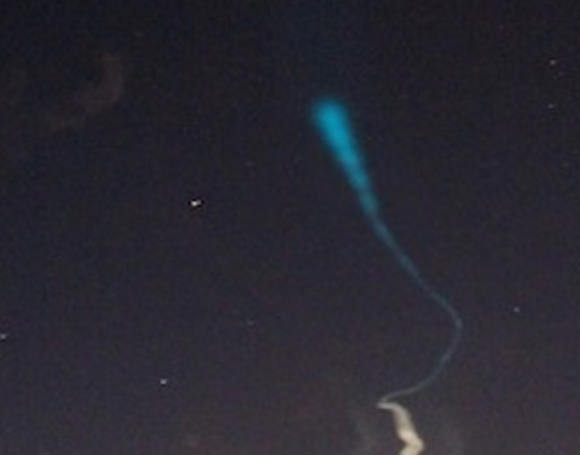Have you seen Star Trek: Into Darkness yet? If so, did you see the NASA-themed trailer, too? A crowd-funded 30-second video called “We Are the Explorers” is debuting at theaters this week, shown before the new Trek film begins. It highlights America’s future in space and is narrated by actor Peter Cullen, the voice of head Transformer Optimus Prime.
Continue reading “This is the new ‘We Are the Explorers’ Video You’ll See at ‘Star Trek: Into Darkness””
‘Star Trek into Darkness’ & NASA Station Crews Join Forces at Live NASA Webcast
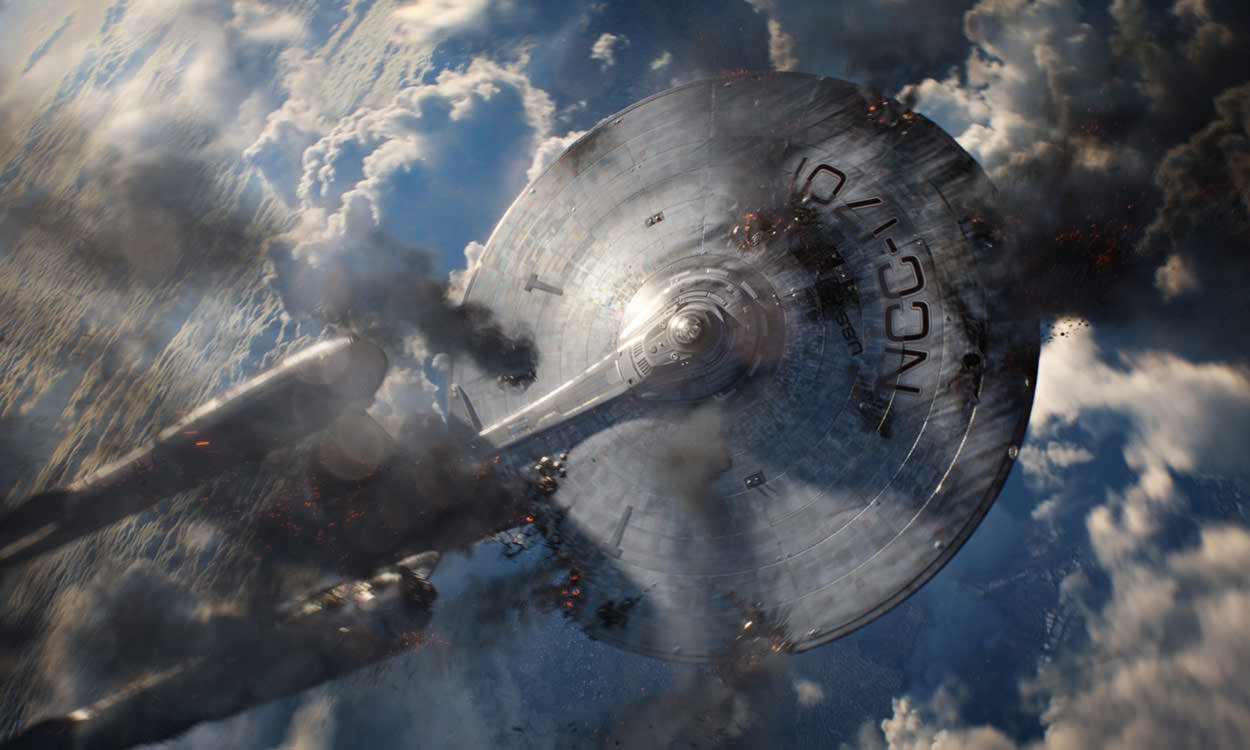
Science Fact and Science Fiction join forces in space today for a one of a kind meeting turning science fiction into reality – and you can participate courtesy of NASA and Hollywood!
Fictional astronauts and crews from the newest Star Trek incarnation; “Star Trek into Darkness” and real life astronauts taking part from outer space and Earth get connected today (May 16) via a live ‘space bridge’ webcast hosted by NASA. The movies premieres today – May 16.
NASA Television broadcasts the face-to-face meeting as a Google+ Hangout from noon to 12:45 p.m. EDT, May 16. Watch live below!
The webcast includes “Captain Kirk” – played by actor Chris Pine, and NASA astronaut Chris Cassidy – fresh off from his real life ‘emergency spacewalk’ this past weekend that saved the critically important cooling system aboard the International Space Station (ISS). “Into Darkness” features dramatic life and death spacewalks.
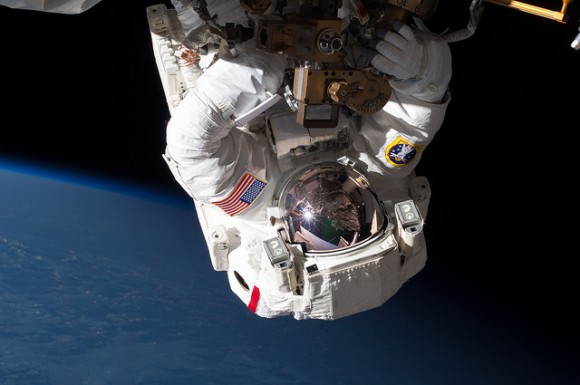
Also participating in the live NASA webcast are ‘Star Trek’ director J.J. Abrams, screenwriter and producer Damon Lindelof; and actors Alice Eve (Dr. Carol Marcus) and John Cho (Sulu) and astronauts Michael Fincke and Kjell Lindgren at NASA’s Johnson Space Center in Houston.
Fincke flew on the Space Shuttle and the ISS and made a guest appearance on the finale of the TV series – “Star Trek: Enterprise”. See photo below.
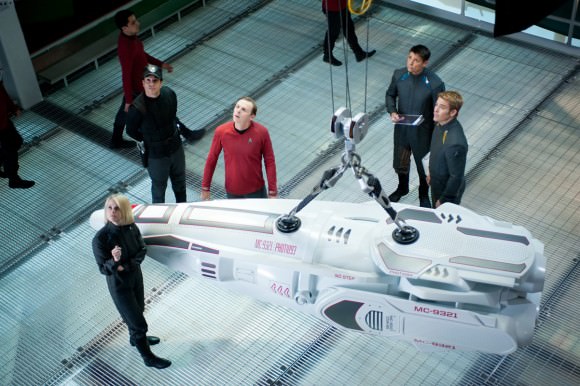
The ISS is a sort of early forerunner for the fictional ‘Federation’ in the ‘Star Trek’ Universe – constructed in low Earth orbit by the combined genius and talents of 5 space agencies and 16 nations of Earth to forge a united path forward for the peaceful exploration of Outer Space.
Cassidy will provide insights about everyday life aboard the real space station – like eating, sleeping, exercising and fun ( think Chris Hadfield’s guitar strumming ‘Space Oddity’ -watch the YouTube video below) – as well as the myriad of over 300 biological, chemical and astronomical science experiments performed by himself and the six person station crews during their six-month stints in zero gravity.
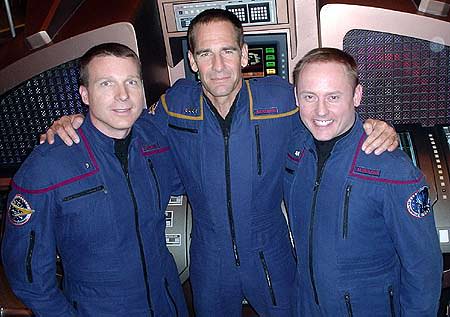
The participants will ask questions of each other and take questions from the Intrepid Sea, Air & Space Museum in New York City (home of the space shuttle Enterprise), the Smithsonian’s National Air and Space Museum in Washington, and social media followers, says NASA.
Social media followers were allowed to submit 30 sec video questions until early this morning.
And you can submit questions today and during the live broadcast using the hashtag #askNASA on YouTube, Google+, Twitter and Facebook.

Watch the hangout live on NASA’s Google+ page, the NASA Television YouTube channel, or NASA TV starting at Noon EDT, May 16.
As a long time Star Trek fan (since TOS) I can’t wait to see ‘Into Darkness’
…………….
Learn more about NASA missions, Mars, Curiosity and more at Ken’s upcoming lecture presentation:
June 12: “Send your Name to Mars” and “LADEE Lunar & Antares ISS Rocket Launches from Virginia”; Franklin Institute and Rittenhouse Astronomical Society, Philadelphia, PA, 8 PM.
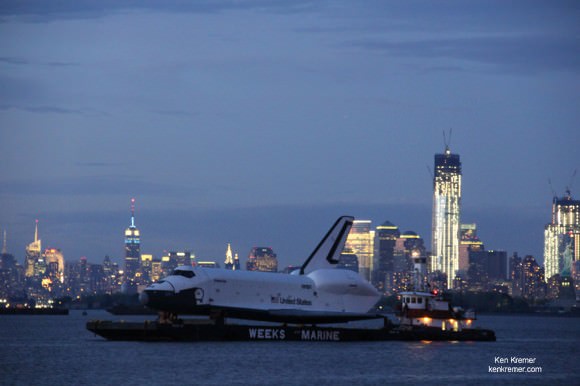
Yet Another X-Class Flare From AR 1748
Last night, as Commander Hadfield and the Expedition 35 crew were returning to Earth in their Soyuz spacecraft, the Sun unleashed yet another X-class flare from active region 1748, the third and most powerful eruption yet from the sunspot region in the past 24 hours — in fact, at a level of X3.2, it was the most intense flare observed all year.
And with this dynamic sunspot region just now coming around the Sun’s limb and into view, we can likely expect much more of this sort of activity… along with a steadily increasing chance of an Earth-directed CME.
According to SpaceWeather.com AR1748 has produced “the strongest flares of the year so far, and they signal a significant increase in solar activity. NOAA forecasters estimate a 40% chance of more X-flares during the next 24 hours.”
(Find out more about the classification of solar flares here.)
The sunspot region just became fully visible to Earth during the early hours of May 13 (UT).
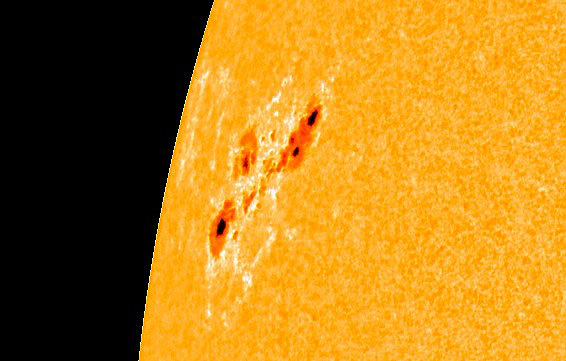
Sunspots are regions where the Sun’s internal magnetic fields rise up through its surface layers, preventing convection from taking place and creating cooler, optically darker areas. They often occur in pairs or clusters, with individual spots corresponding to the opposite polar ends of magnetic lines.
Sunspots may appear dark because they are relatively cooler than the surrounding area on the Sun’s photosphere, but in ultraviolet and x-ray wavelengths they are brilliantly white-hot. And although sunspots look small compared to the Sun, they are often many times larger than Earth.
Read more: How Big Are Sunspots?
According to SDO project scientists Dean Pesnell on the SDO is Go! blog, AR1748 is not only rapidly unleashing flares but also changing shape.
“The movies show that the sunspot is changing, the two small groups on the right merging and the elongated spot on the lower left expanding out to join them,” Pesnell wrote earlier today.
Of course, as a solar scientist Pesnell is likely much more excited about the chance to observe further high-intensity activity than he is concerned about any dramatically negative impacts of a solar storm here on Earth, which, although possible, are still statistically unlikely.
“Great times ahead for this active region!” he added enthusiastically.
For updated information on AR1748’s activity visit SpaceWeather.com and NASA’s SDO site, and also check out TheSunToday.org run by solar physicist C. Alex Young, Ph.D.
Images courtesy of NASA/SDO and the AIA, EVE, and HMI science teams.
Skylab: NASA Commemorates 40th Anniversary of America’s First Space Station – Photo Gallery/Broadcast
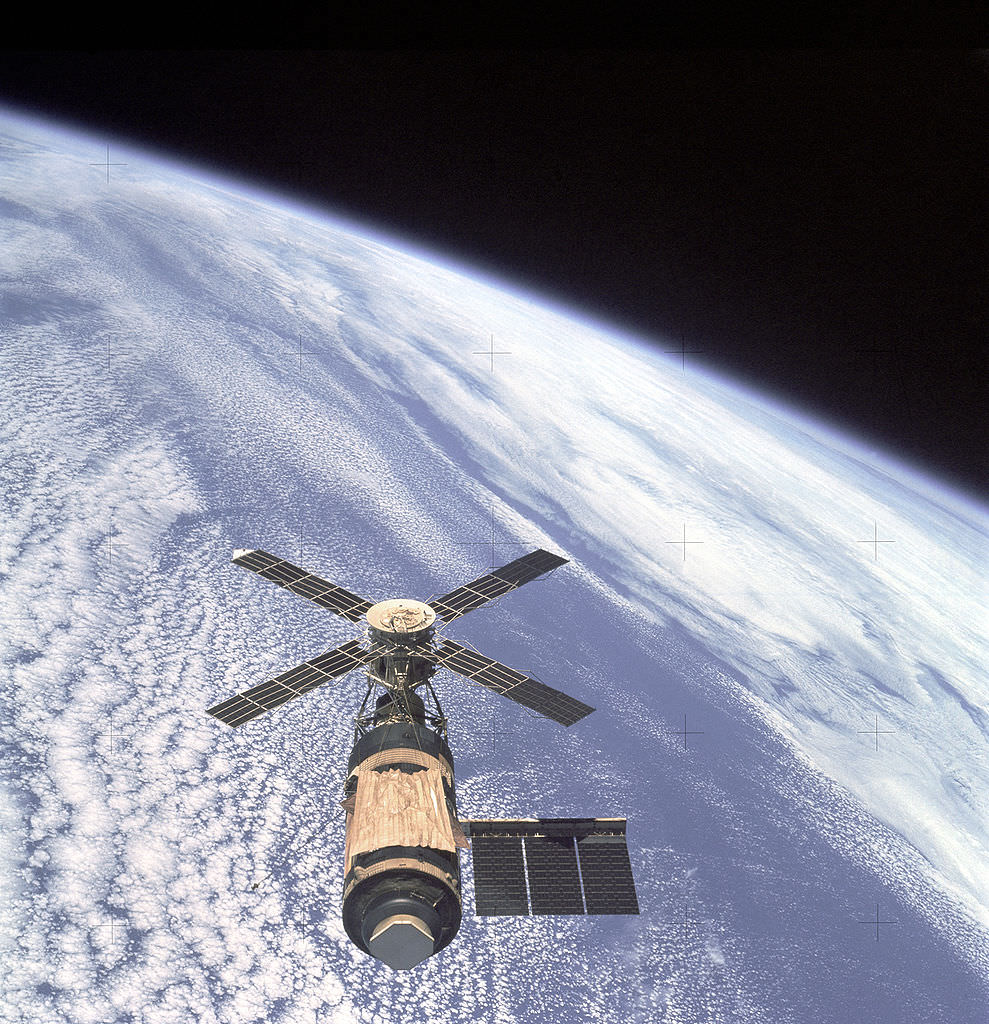
View of NASA’s Skylab Orbital Workshop in Earth orbit as photographed during departure of its last astronaut crew on Slylab 4 mission for the return home in Apollo capsule.
Credit: NASA
See photo gallery below
Watch the recorded NASA Skylab 40th Anniversary discussion on YouTube – below[/caption]
Skylab was America’s first space station. The massive orbital workshop was launched unmanned to Earth orbit 40 years ago on May 14, 1973 atop the last of NASA’s Saturn V rockets that successfully lofted American’s astronauts on the historic lunar landings of the Apollo-era.
Three manned Apollo crews comprising three astronauts each ultimately lived and worked and conducted groundbreaking science experiments aboard Skylab for a total of 171 days from May 1973 to February 1974. Skylab paved the way for long duration human spaceflight and the ISS (International Space Station)
On May 13, NASA commemorated the 40th anniversary of Skylab’s liftoff with a special roundtable discussion broadcast live on NASA TV. The event started at 2:30 PM EDT and originated from NASA Headquarters in Washington, DC. Participants included Skylab and current ISS astronauts and NASA human spaceflight managers.
Watch the recorded NASA Skylab 40th Anniversary briefing on YouTube – below.
The Skylab project was hugely successful in accomplishing some 300 science experiments despite suffering a near death crisis in its first moments.
Shortly after blastoff of the Saturn V from Launch Complex 39A the station was severely crippled when launch vibrations completely ripped off one of the stations two side mounted power generating solar panels.
The micrometeoroid shield that protected the orbiting lab from intense solar heating was also torn away and lost. This caused the workshop’s internal temperatures to skyrocket to an uninhabitable temperature of 52 degrees Celsius (126 degrees F).
Furthermore, a piece of the shield had wrapped around the other solar panel which prevented its deployment, starving the station of desperately required electrical power.
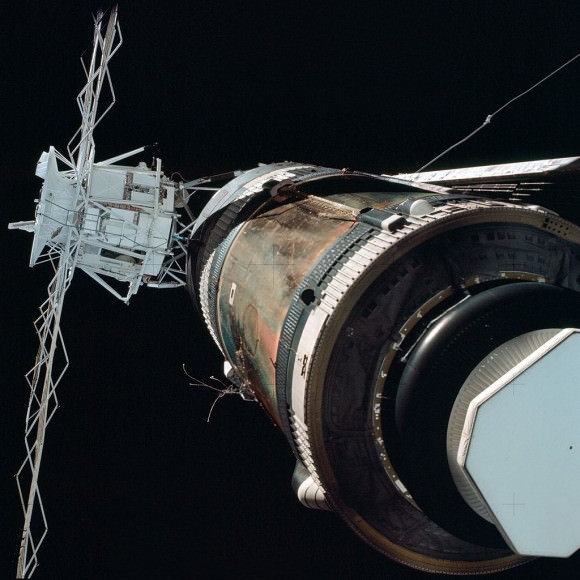
All nine astronauts that worked on Skylab were launched on the smaller Saturn 1B rocket from Pad 39B at the Kennedy Space Center.
The launch of the first crew was delayed by 10 days while teams of engineers at NASA devised a rescue plan to save the station. Engineers also ‘rolled’ Skylab to an attitude that minimized the unrelenting solar baking.
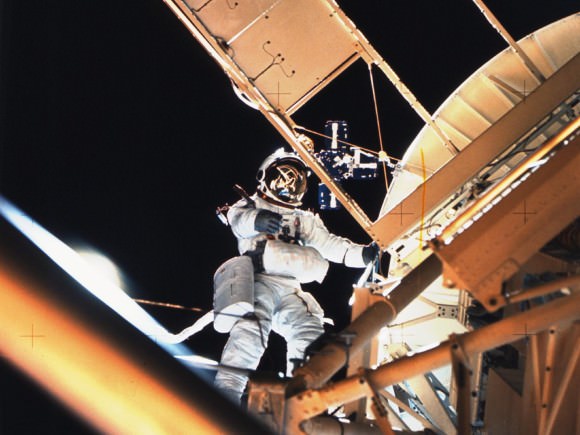
The first crew aboard Skylab 2 launched on May 25, 1973 and successfully carried out three emergency spacewalks that salvaged the station and proved the value of humans in space. They freed the one remaining stuck solar panel and deployed a large fold out parasol sun shade through a science airlock that cooled the lab to a livable temperature of 23.8 degrees C (75 degrees F).
The Skylab 2 crew of Apollo 12 moon walker Charles Conrad, Jr., Paul J. Weitz, and Joseph P. Kerwin spent 28 days and 50 minutes aboard the complex.
The outpost became fully operational on June 4, 1973 allowing all three crews to fully carry out hundreds of wide ranging science experiments involving Earth observations and resources studies, solar astronomy and biomedical studies on human adaption to zero gravity.
The second crew launched on the Skylab 3 mission on July 28, 1973. They comprised Apollo 12 moon walker Alan L. Bean, Jack R. Lousma and Owen K. Garriott and spent 59 days and 11 hours aboard the orbiting outpost. They conducted three EVAs totaling 13 hours, 43 minutes and deployed a larger and more stable sun shade.
The 3rd and last crew launched on Skylab 4 on Nov. 16, 1973. Astronauts Gerald P. Carr, William R. Pogue, Edward G. Gibson spent 84 days in space. Their science observations included Comet Kohoutek. They conducted four EVAs totaling 22 hours, 13 minutes.
Skylab was the size of a 3 bedroom house and far more spacious then the tiny Apollo capsules. The complex was 86.3 ft (26.3 m) long and 24.3 ft (7.4 m) in diameter. It weighed 169,950 pounds.
“Skylab took the first step of Americans living in space and doing useful science above the atmosphere at wavelengths not possible on the ground and for long duration periods,” said astronaut Owen Garriot, science pilot, Skylab 3.
Skylab was also the first time student experiments flew into space – for example the spiders ‘Anita and Arabella’ – and later led to a many educational initiatives and programs and innovative ideas.
The Skylab project taught NASA many lessons in designing and operating the ISS, said NASA astronaut Kevin Ford who was the Commander of the recently completed Expedition 34.
NASA had hoped to revisit Skylab with Space Shuttle crews in the late 1970’s. But the massive lab’s orbit degraded faster than expected and Skylab prematurely plummeted back to Earth and disintegrated on July 11, 1979.
See a photo gallery of views from the Skylab missions herein.
Be sure to follow today’s (May 13) undocking of the ISS Expedition 35 crew (Commander ‘extraordinaire’ Chris Hadfield, Tom Marshburn and Roman Romanenko) and return to Earth tonight aboard a Russian Soyuz capsule.
The ISS is a fantastic measure of just have far we have come in space since Skylab – with the US and Russia peacefully cooperating to accomplish far more than each can do alone.
…………….
Learn more about NASA missions, Mars, Antares and Curiosity at Ken’s upcoming lecture presentation:
June 12: “Send your Name to Mars” and “Antares Rocket Launch from Virginia”; Franklin Institute and Rittenhouse Astronomical Society, Philadelphia, PA, 8 PM.
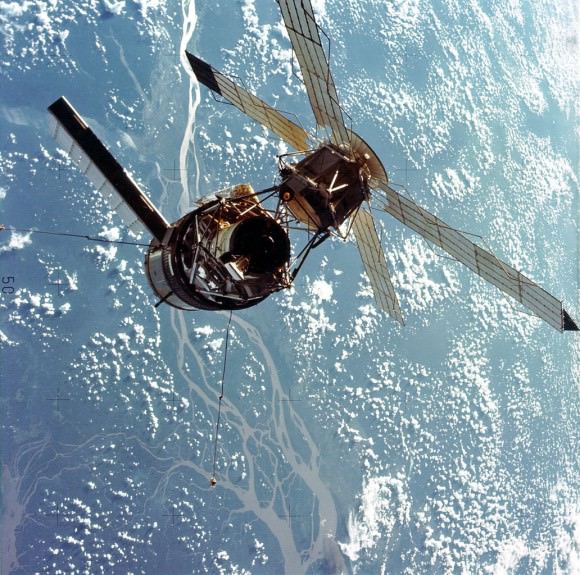
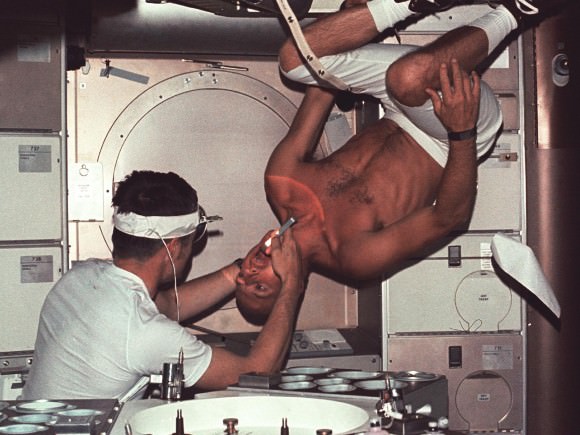
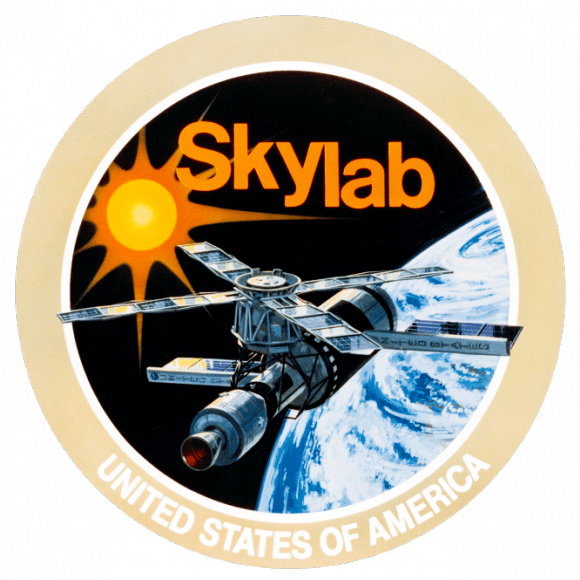
Curiosity Reaches Out with Martian Handshake and Contemplates New Drilling at Habitable Site
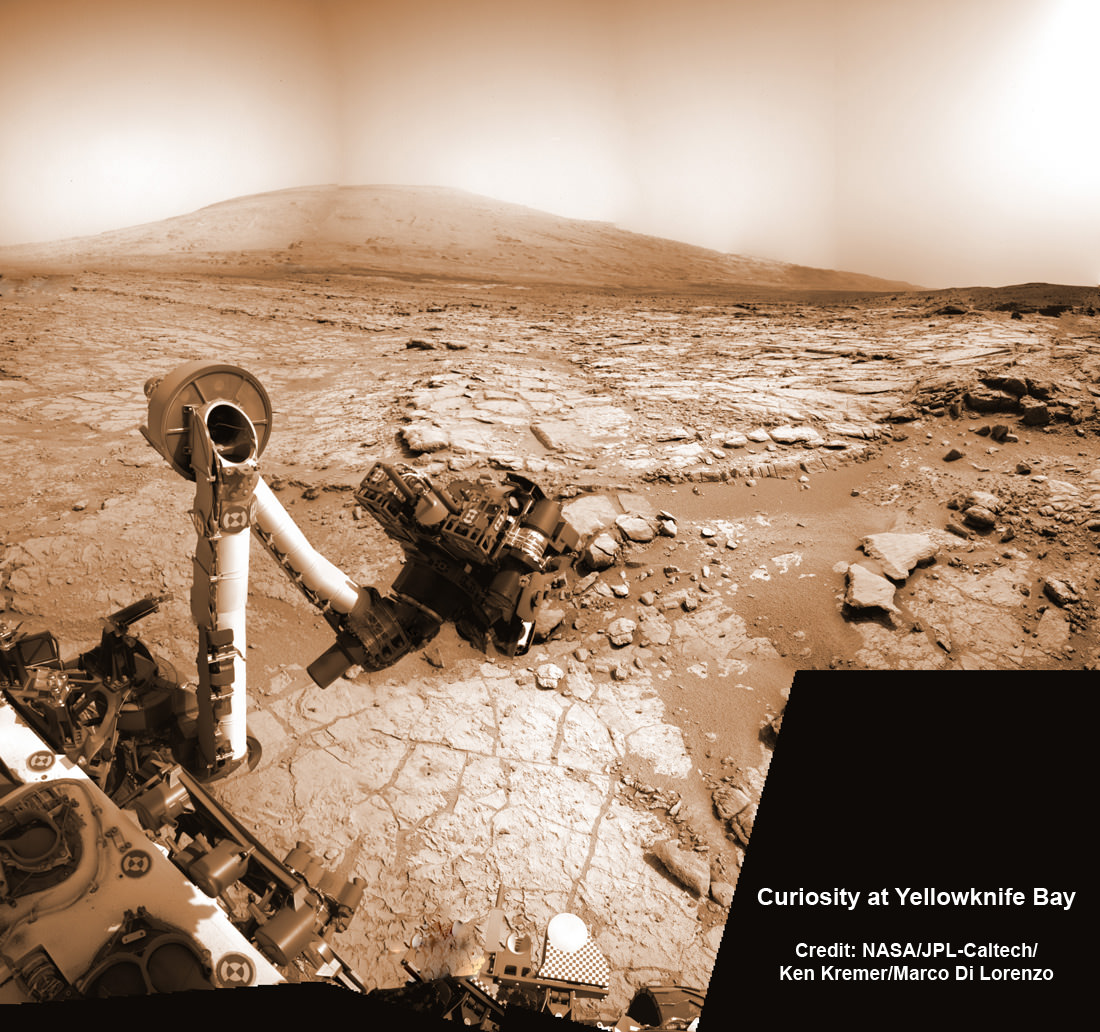
NASA’s Curiosity rover reaches out in ‘handshake’ like gesture to welcome the end of solar conjunction and resumption of contact with Earth. This mosaic of images was snapped by Curiosity on Sol 262 (May 2, 2013) and shows her flexing the robotic arm with dramatic scenery of Mount Sharp in the background. Two drill holes are visible on the surface bedrock below the robotic arm’s turret where she discovered a habitable site.
Credit: NASA/JPL-Caltech/Ken Kremer-(kenkremer.com)/Marco Di Lorenzo[/caption]
NASA’s Curiosity rover has reached out in a Martian ‘handshake’ like gesture welcoming the end of solar conjunction that marks the resumption of contact with her handlers back on Earth – evidenced in a new photo mosaic of images captured as the robot and her human handlers contemplate a short traverse to a 2nd drilling target in the next few days.
“We’ll move a small bit and then drill another hole,” said John Grotzinger to Universe Today. Grotzinger, of the California Institute of Technology in Pasadena, Calif., leads NASA’s Curiosity Mars Science Laboratory mission.
The rover science team and Grotzinger have selected that 2nd drill location and are itching to send the rover on her way to the bumpy spot called “Cumberland.”
Cumberland lies about nine feet (2.75 meters) west of the “John Klein’ outcrop where Curiosity conducted humanity’s first ever interplanetary drilling on the alien Martian surface in February 2013.
“We’ll confirm what we found in the John Klein hole,” Grotzinger told me.
Curiosity discovered a habitable zone at the John Klein drill site.
After pulverizing and carefully sifting the John Klein drill tailings, a powered, aspirin sized portion of the gray rock was fed into a trio of inlet ports atop the rovers deck and analyzed by Curiosity’s duo of miniaturized chemistry labs named SAM and Chemin inside her belly to check for the presence of organic molecules and determine the inorganic chemical composition.
‘Cumberland’ and ‘John Klein’ are patches of flat-lying bedrock shot through with pale colored calcium sulfate hydrated mineral veins and a bumpy surface texture at her current location inside the ‘Yellowknife Bay’ basin.
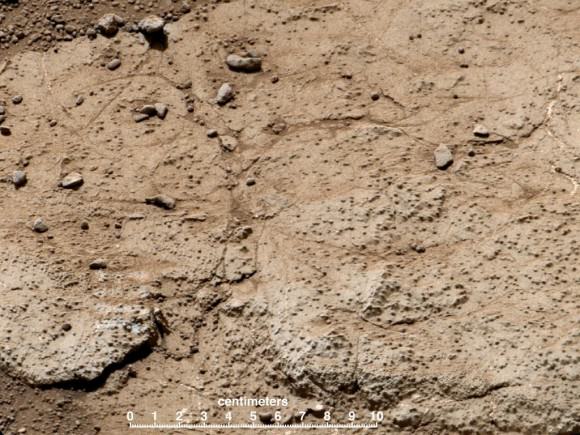
“The bumpiness is due to erosion-resistant nodules within the rock, which have been identified as concretions resulting from the action of mineral-laden water,” NASA said in a statement.
Curiosity snapped high resolution color images of Cumberland on Sol 192 (Feb. 19, 2013) as part of the ongoing data collection campaign to put Yellowknife Bay into scientific context and search for future drill targets.
The John Klein bore hole (drilled on Feb 8, 2013, Sol 182) is visible in our new photo mosaic above created by myself and my imaging partner Marco Di Lorenzo. It was stitched from a ‘Martian baker’s dozen’ of raw images captured on May 2 (Sol 262). and shows the hand-like tool turret positioned above the first pair of drill holes.
Our new Sol 262 mosaic illustrates that Curiosity is again fully functional and flexing the miracle arm following a relaxing month long period of ‘Spring Break’ when there was no two- way communication with Earth during April’s solar conjunction.
The Sol 262 photo mosaic was originally featured at NBC News by Cosmic Log science editor Alan Boyle who likened it to a future Martian handshake in this cleverly titled story; “Curiosity’s ‘hand’ outstretched on Mars: Will humans ever shake it?”
See below our Sol 169 panoramic context view of Curiosity inside Yellowknife Bay collecting spectroscopic science measurements at the John Klein outcrop.
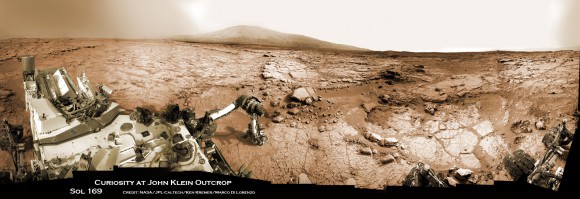
Curiosity found that the fine-grained, sedimentary mudstone rock at the John Klein worksite inside the shallow depression known as Yellowknife Bay possesses significant amounts of phyllosilicate clay minerals; indicating the flow of nearly neutral liquid water and a habitat friendly to the possible origin of simple Martian microbial life forms eons ago.
Grotzinger also explained to Universe Today that Curiosity will soon to more capable than ever before.
“We’ll spend the next few sols transitioning over to new flight software that gives the rover additional capabilities’” said Grotzinger.
“Then we’ll spend some time testing out the science instruments on the B-side rover compute element – that we booted to before conjunction.”
Curiosity will spend a month or more at the Cumberland site to collect and completely analyze the drill tailings.
Then she’ll resume her epic trek to mysterious Mount Sharp, the 3.5 mile (5 km) high mountain that dominates her landing site and is her ultimate driving inside Gale Crater according to Grotzinger.
“After that [Cumberland] we’re likely to begin the trek to Mt. Sharp, though we’ll stop quickly to look at a few outcrops that we passed by on the way into Yellowknife Bay,” Grotzinger explained to Universe Today.
The Shaler outcrop passed by on the path into Yellowknife Bay is high on the list of stops during the year long journey to Mount Sharp, says Grotzinger. Read more details about Shaler in a new BBC story by Jonathan Amos – here – featuring our Shaler outcrop mosaic.
And don’t forget to “Send Your Name to Mars” aboard NASA’s MAVEN orbiter- details here. Deadline: July 1, 2013
…………….
Learn more about Mars, Curiosity and NASA missions at Ken’s upcoming lecture presentation:
June 12: “Send your Name to Mars” and “Antares Rocket Launch from Virginia”; Franklin Institute and Rittenhouse Astronomical Society, Philadelphia, PA, 8 PM.
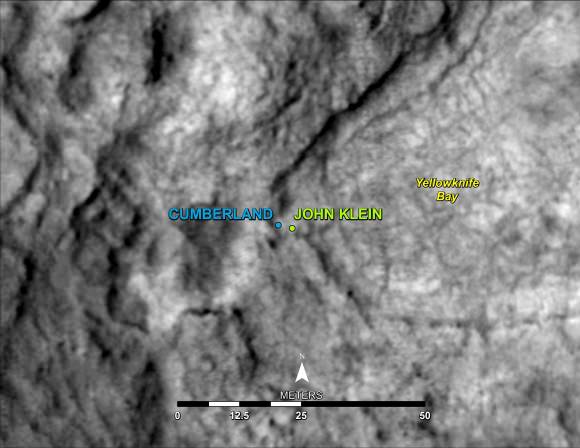
Send Your Name and a Haiku Poem to Mars on a Solar Winged MAVEN
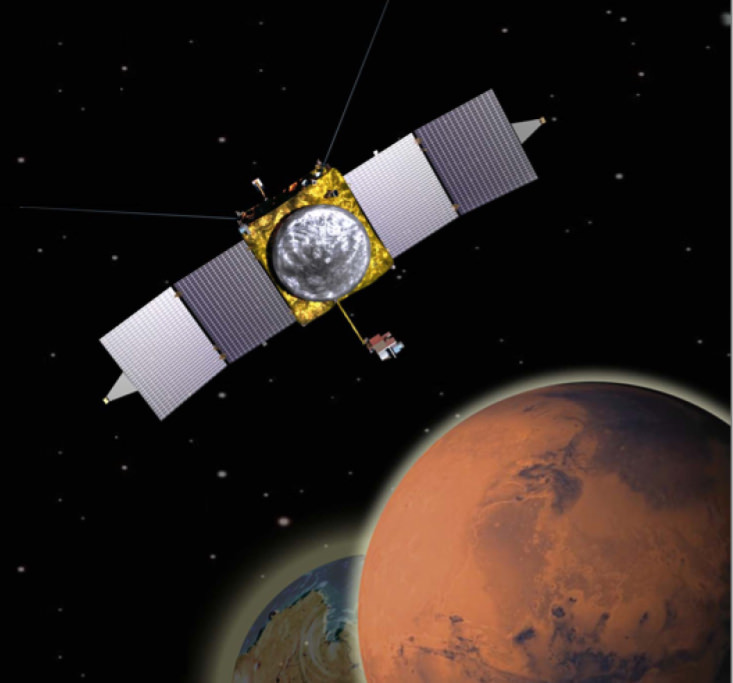
Do you want to go to Mars?
Well here’s your chance to get connected for a double barreled dose of Red Planet adventure courtesy of MAVEN – NASA’s next ‘Mission to Mars’ which is due to liftoff this November from the Florida Space Coast.
For a limited time only, NASA is offering the general public two cool ways to get involved and ‘Go to Mars’ aboard a DVD flying on the solar winged MAVEN (Mars Atmosphere and Volatile Evolution) orbiter.
You can send your name and a short poetic message to Mars via the ‘Going to Mars’ campaign being managed by the University of Colorado at Boulder’s Laboratory for Atmospheric and Space Physics (CU/LASP).
“Anybody on planet Earth is welcome to participate!” says NASA.
“The Going to Mars campaign offers people worldwide a way to make a personal connection to space, space exploration, and science in general, and share in our excitement about the MAVEN mission,” said Stephanie Renfrow, lead for the MAVEN Education and Public Outreach program at CU/LASP.
Signing up to send your name is easy. Simply click on the MAVEN mission website – here.
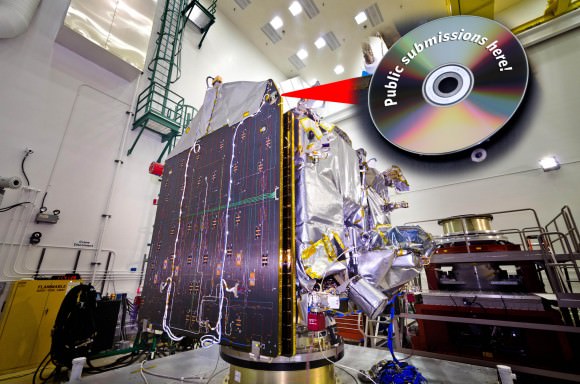
Everyone who submits their name will be included on a DVD that will be attached to the winged orbiter. And you can print out a beautiful certificate of participation emblazoned with your name!
Over 1 million folks signed up to send their names to Mars with NASA’s Curiosity rover. So they are all riding along as Curiosity continues making ground breaking science discoveries and already found habitats that could support potential Martian microbes.
Writing the haiku poem will require thought, inspiration and creativity and involves a public contest – because only 3 poems will be selected and sent to Mars. The public will vote for the three winning entries.
Haiku’s are three line poems. The rules state that “the first and last lines must have exactly five syllables each and the middle line must have exactly seven syllables. All messages must be original and not plagiarized in any way.”
The complete contest rules are found at the mission website – here:
This is a simple way for kids and adults alike to participate in humanity’s exploration of the Red Planet. And it’s also a great STEM activity for educators and school kids of all ages before this year’s school season comes to a close.
“This new campaign is a great opportunity to reach the next generation of explorers and excite them about science, technology, engineering and math,” said Bruce Jakosky, MAVEN principal investigator from CU/LASP. “I look forward to sharing our science with the worldwide community as MAVEN begins to piece together what happened to the Red Planet’s atmosphere.”
MAVEN is slated to blast off atop an Atlas V rocket from Cape Canaveral Florida on Nov. 18, 2013. It will join NASA’s armada of four robotic spacecraft when it arrives at Mars during 2014.
MAVEN is the first spacecraft devoted to exploring and understanding the Martian upper atmosphere. The spacecraft will investigate how the loss of Mars’ atmosphere to space determined the history of water on the surface.
But don’t dawdle- the deadline for submissions is July 1.
So, sign up to ‘Go to Mars’ – and do it NOW!
Juice up your inner poet and post your ‘Haiku’ here – if you dare
What Left These Spooky Trails in the Sky?
Ball lightning? Spectral orbs? Swamp gas? Early this morning, May 7, these eerie glowing trails were seen in the sky above the Marshall Islands and were captured on camera by NASA photographer John Grant. Of course, if NASA’s involved there has to be a reasonable explanation, right?
For a larger image (and to see what really caused the trails) click below:
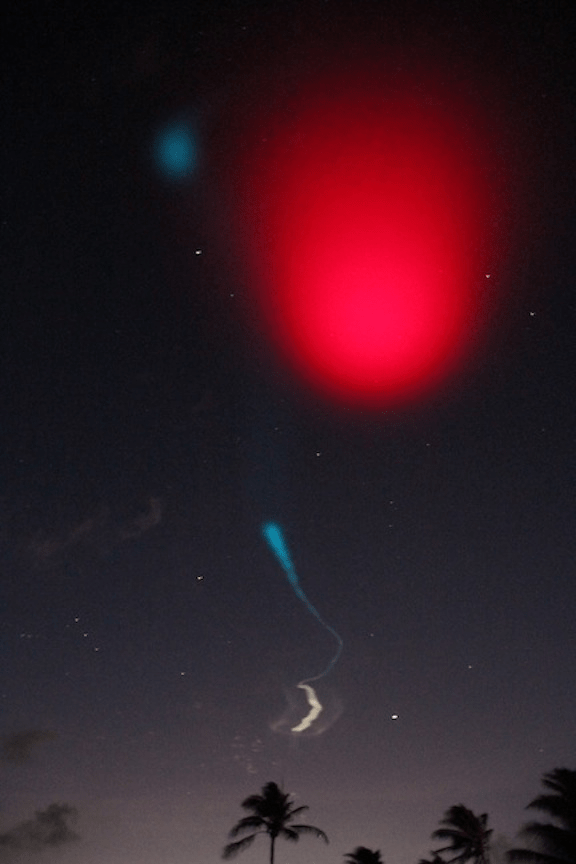
Although it might look like cheesy special effects, these colorful clouds are actually visible trails that were left by two sounding rockets launched from Roi Namur in the Marshall Islands, at 3:39 a.m. EDT on May 7. The rockets were part of the NASA-funded EVEX experiment to study winds and electrical activity in the upper atmosphere.
The red cloud was formed by the release of lithium vapor and the white-and-blue tracer clouds were formed by the release of trimethyl aluminum (TMA). These clouds allowed scientists on the ground from various locations in the Marshall Islands to observe neutral winds in the ionosphere.
“Neutral winds are one of the hardest things to study,” said Doug Rowland, an EVEX team member at NASA’s Goddard Space Flight Center in Greenbelt, Maryland. “One can’t physically see the wind, and it is difficult to measure from the ground, so we use the TMA as a tracer.”
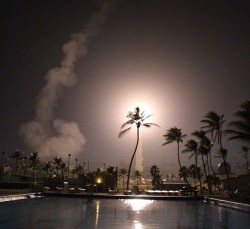
The EVEX (Equatorial Vortex Experiment) rockets were launched 90 seconds apart. By staggering the launches the two rockets were able to gather data simultaneously at two altitudes through the ionosphere.
Beginning about 60 miles (96 km) up, the ionosphere is a crucial layer of charged particles surrounding our planet. This layer serves as the medium through which high frequency radio waves – such as those sent down to the ground by satellites – travel. Governed by Earth’s magnetic field, high-altitude winds, and incoming material and energy from the sun, the ionosphere can be calm at certain times of day and at other times turbulent, disrupting satellite signals.
The EVEX experiment is designed to measure events in two separate regions of the ionosphere to see how they work together to drive it from placid and smooth to violently disturbed. Such information could ultimately lead to the ability to accurately forecast this important aspect of space weather.
Image source: NASA’s Goddard Space Flight Center on Flickr
Mars Armada Resumes Contact with NASA – Ready to Rock ‘n Roll n’ Drill
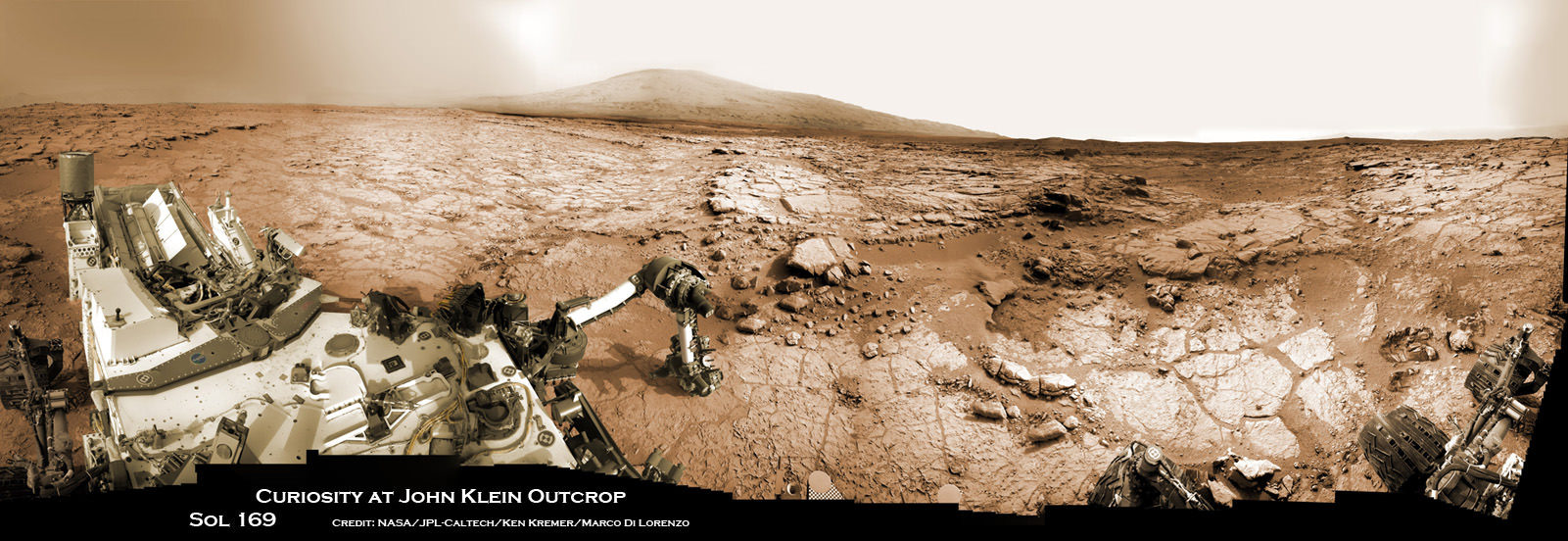
Curiosity accomplished historic 1st drilling into Martian rock at John Klein outcrop on Feb 8, 2013 (Sol 182), shown in this context mosaic view of the Yellowknife Bay basin taken on Jan. 26 (Sol 169) – back dropped with Mount Sharp – where the robot is currently working. Curiosity will bore a 2nd drill hole soon following the resumption of contact with the end of the solar conjunction period. Credit: NASA/JPL-Caltech/Ken Kremer/Marco Di Lorenzo
See drill hole and conjunction videos below[/caption]
After taking a well deserved and unavoidable break during April’s solar conjunction with Mars that blocked two way communication with Earth, NASA’s powerful Martian fleet of orbiters and rovers have reestablished contact and are alive and well and ready to Rock ‘n Roll ‘n Drill.
“Both orbiters and both rovers are in good health after conjunction,” said NASA JPL spokesman Guy Webster exclusively to Universe Today.
Curiosity’s Chief Scientist John Grotzinger confirmed to me today (May 1) that further drilling around the site of the initial John Klein outcrop bore hole is a top near term priority.
The goal is to search for the chemical ingredients of life.
“We’ll drill a second sample,” Grotzinger told Universe Today exclusively. Grotzinger, of the California Institute of Technology in Pasadena, Calif., leads NASA’s Curiosity Mars Science Laboratory mission.
“We’ll move a small bit, either with the arm or the wheels, and then drill another hole to confirm what we found in the John Klein hole.”
Earth, Mars and the Sun have been lined up in nearly a straight line for the past several weeks, which effectively blocked virtually all contact with NASA’s four pronged investigative Armada at the Red Planet.
NASA’s Red Planet fleet consists of the Curiosity (MSL) and Opportunity (MER) surface rovers as well as the long lived Mars Odyssey (MO) and Mars Reconnaissance Orbiter (MRO) robotic orbiters circling overhead. ESA’s Mars Express orbiter is also exploring the Red Planet.
“All have been in communications,” Webster told me today, May 1.
The NASA spacecraft are functioning normally and beginning to transmit the science data collected and stored in on board memory during the conjunction period when a commanding moratorium was in effect.
“Lots of data that had been stored on MRO during conjunction has been downlinked,” Webster confirmed to Universe Today.

And NASA is already transmitting and issuing new marching orders to the Martian Armada to resume their investigations into unveiling the mysteries of the Red Planet and determine whether life ever existed eons ago or today.
“New commanding, post-conjunction has been sent to both orbiters and Opportunity.”
“And the sequence is being developed today for sending to Curiosity tonight (May 1), as scheduled more than a month ago,” Webster explained.
“We’ll spend the next few sols transitioning over to new flight software that gives the rover additional capabilities,” said Grotzinger.
“After that we’ll spend some time testing out the science instruments on the B-side rover compute element – that we booted to before conjunction.”
Curiosity is at work inside the Yellowknife Bay basin just south of the Martian equator. Opportunity is exploring the rim of Endeavour crater at the Cape York rim segment.
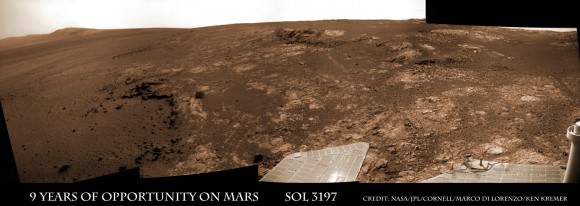
Mars Solar Conjunction is a normal celestial event that occurs naturally about every 26 months. The science and engineering teams take painstaking preparatory efforts to insure no harm comes to the spacecraft during the conjunction period when they have no chance to assess or intervene in case problems arise.
So it’s great news and a huge relief to the large science and operations teams handling NASA’s Martian assets to learn that all is well.
Since the sun can disrupt and garble communications, mission controllers suspended transmissions and commands so as not to inadvertently create serious problems that could damage the fleet in a worst case scenario.
So what’s on tap for Curiosity and Opportunity in the near term ?
“For the first few days for Curiosity we will be installing a software upgrade.”
“For both rovers, the science teams will be making decisions about how much more to do at current locations before moving on,” Webster told me.
The Opportunity science team has said that the long lived robot has pretty much finished investigating the Cape York area at Endeavour crater where she made the fantastic discovery of phyllosilicates clay minerals that form in neutral water.
Signals from Opportunity received a few days ago on April 27 indicated that the robot had briefly entered a standby auto mode while collecting imagery of the sun.
NASA reported today that all operations with Opportunity was “back under ground control, executing a sequence of commands sent by the rover team”, had returned to normal and the robot exited the precautionary status.
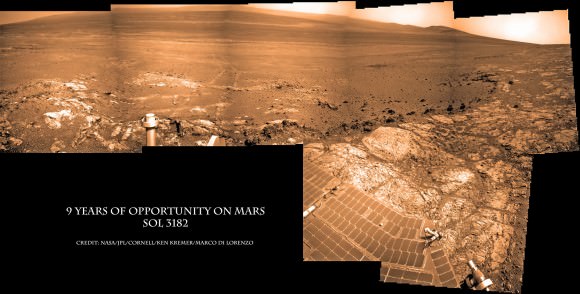
“The Curiosity team has said they want to do at least one more drilling in Yellowknife Bay area,” according to Webster.
Curiosity has already accomplished her primary task and discovered a habitable zone that possesses the key ingredients needed for potential alien microbes to once have thrived in the distant past on the Red Planet when it was warmer and wetter.
The robot found widespread evidence for repeated episodes of flowing liquid water, hydrated mineral veins and phyllosilicates clay minerals on the floor of her Gale Crater landing site after analyzing the first powder ever drilled from a Martian rock.
Video Caption: Historic 1st bore hole drilled by NASA’s Curiosity Mars rover on Sol 182 of the mission (8 Feb 2013). Credit: NASA/JPL-Caltech/MSSS/Marco Di Lorenzo/Ken Kremer (http://www.kenkremer.com/)
During conjunction Curiosity collected weather, radiation and water measurements but no imagery.
Check out this wonderful new story at Space.com featuring Curiosity mosaics by me and my imaging partner Marco Di Lorenzo and an interview with me.
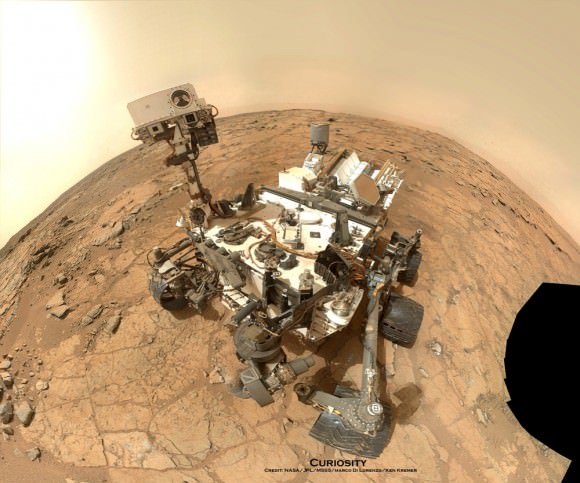
Watch this brief NASA JPL video for an explanation of Mars Solar Conjunction.
Fly Along With Voyager
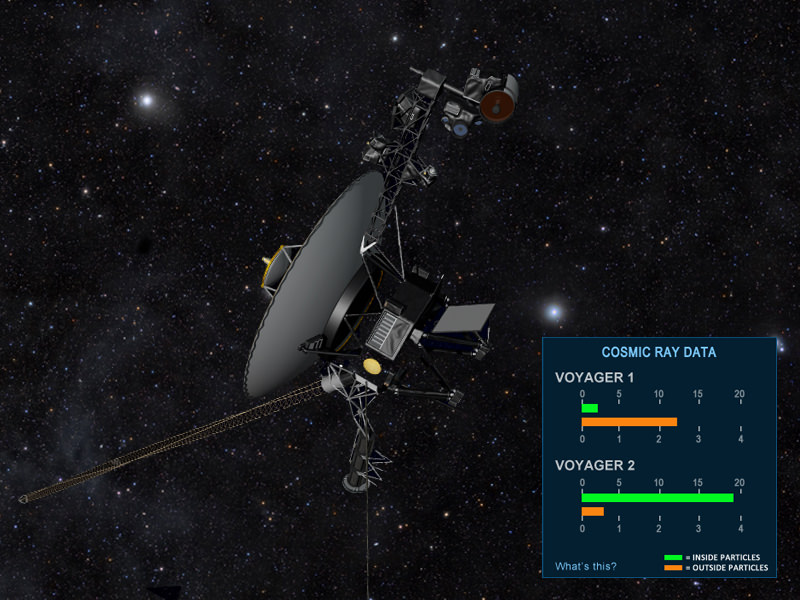
Far away, deep in the dark, near the edge of interstellar space, Voyager 1 and 2 are hurtling near the tenuous edge of the magnetic bubble surrounding the Sun known as the heliosphere and NASA wants you to ride along.
The Voyager website sports a new feature showing cosmic ray data. NASA’s Eyes on the Solar System, a popular Web-based interactive tool, contains a new Voyager module, that not only lets you ride along for the Voyagers’ journeys but also shows important scientific data flowing from the spacecraft.
[Warning:Play with this tool at your own risk. Interacting with this online feature can seriously impact your time; in an educational way, of course!]
As Voyager 1 explores the outer limits of the heliosphere, where the breath from our Sun is just a whisper, scientists are looking for three key signs that the spacecraft has left our solar system and entered interstellar space, or the space between stars. Voyager 1 began heading for the outer Solar System after zipping through the Saturn system in 1980.
The new module contains three gauges, updated every six hours from real data from Voyager 1 and 2, that indicate the level of fast-moving particles, slower-moving particles and the direction of the magnetic field. Fast-moving charged particles, mainly protons, come from distant stars and originate from outside the heliosphere. Slower-moving particles, also mainly protons, come from within the heliosphere. Scientists are looking for the levels of outside particles to jump dramatically while inside particles dip. If these levels hold steady, it means the Voyager spacecraft no longer feel the wind from our Sun and the gulf between stars awaits.
Over the past couple of years, data from Voyager 1, the most distant man-made object, show a steady increase of high-powered cosmic radiation indicating the edge is near, scientists say. Voyager 1 appears to have reached the last region before interstellar space. Scientists dubbed the region the “magnetic highway.” Particles from outside are streaming in while particles from inside are streaming out. Voyager 2’s instruments detect slight drops in inside particles but scientists don’t think the probe has entered the area yet.
Scientists also expect a change in the direction of the magnetic field. While particle data is updated every six hours, analyses of the magnetic field data usually takes a few months to prepare.
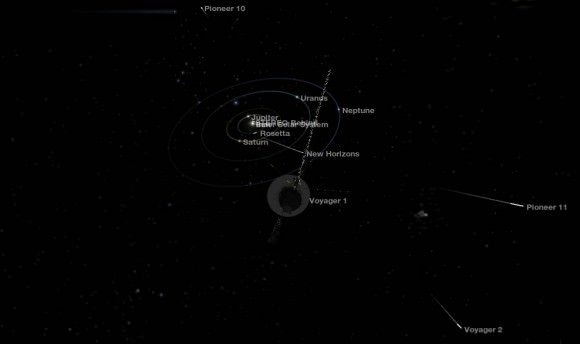
Although launched first, Voyager 2 lags behind its twin Voyager 1 by more than 20 times the distance between the Earth and the Sun. Voyager 2 blasted off August 20, 1977 aboard a Titan-Centaur rocket from Cape Canaveral, Florida. The nuclear-powered craft visited Jupiter and Saturn with an additional mission, called the Grand Tour, to study Uranus and Neptune. Voyager 1 launched two weeks later on September 5, 1977. With a faster flight path, Voyager 1 arrived at Jupiter four months before its sister craft. Voyager 1 went on to study Saturn before using the ringed planet’s gravity field to slingshot it up and out of the plane of the solar system toward the constellation Ophiuchus, the Serpent Bearer.
NASA’s Eyes on the Solar System allows viewers to hitch a ride with any of NASA’s spacecraft as they explore the solar system. Time can be slowed for a near approach of a moon or asteroid or sped up to coast between the planets. Watch close at just the right moment and you can witness one of the spacecrafts roll maneuvers. All spacecraft movements are based on actual spacecraft navigation data.
Check out the Voyager module here, and check out the rest of the the Solar System here at Eyes on the Solar System.
Antares Maiden Soar Pierces Virginia Sky and delivers NASA SmartPhone Pioneer Nanosats to Orbit
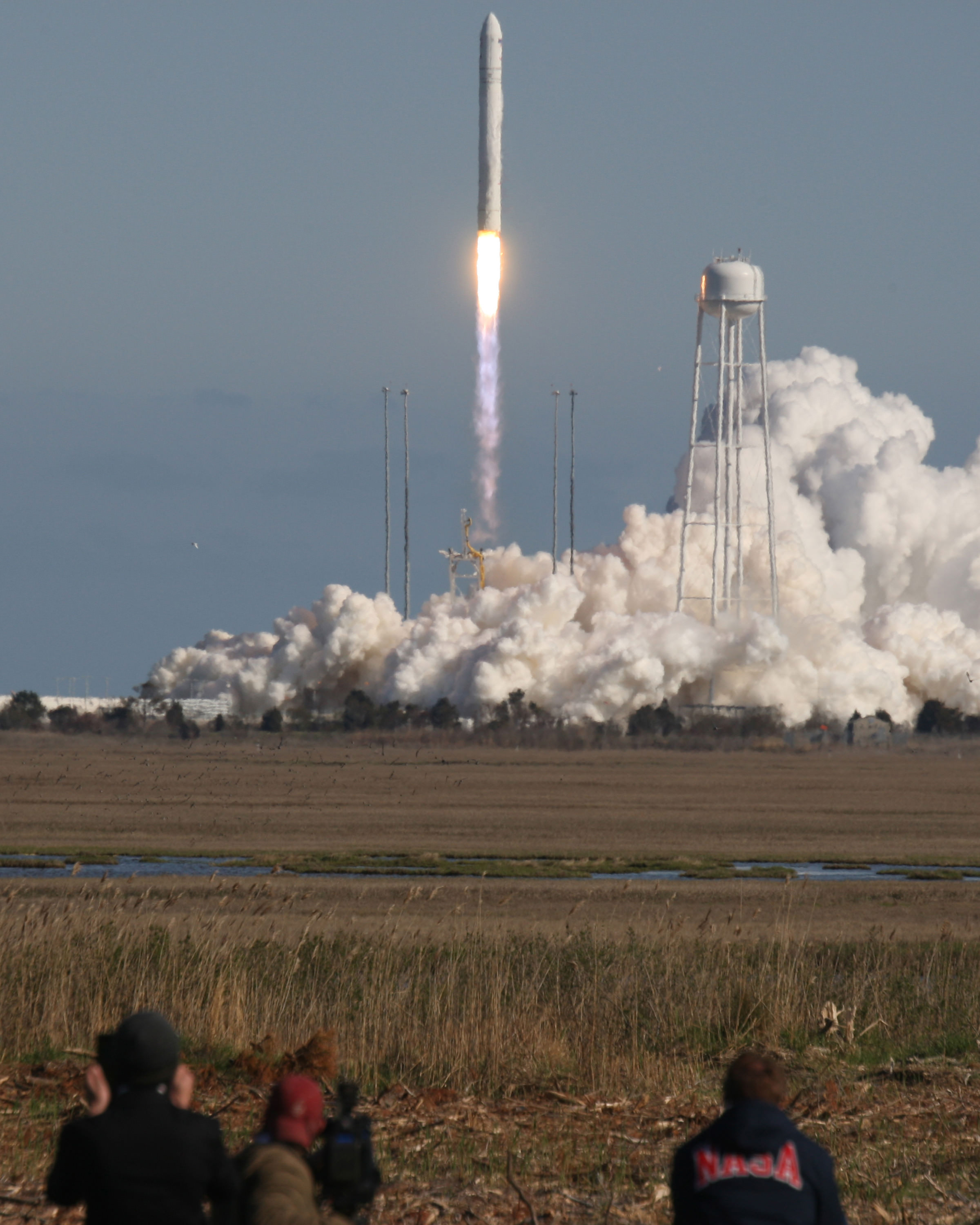
The privately developed Antares rocket built by Orbital Sciences Corp. successfully blasted off on its maiden test flight from the shores of Virginia on April 21 at 5 p.m. EDT from Mid-Atlantic Regional Spaceport (MARS) Pad-0A at NASA Wallops – thereby inaugurating the new commercial space race and delivered a pioneering trio of low cost NASA Smartphone nanosatellites dubbed PhoneSat to orbit.
The 13 story Antares rocket pierced the chilly but cloudless clear blue Virginia skies as “the biggest, loudest and brightest rocket ever to launch from NASA’s Wallops Flight Facility,” said former station astronaut and now Orbital Sciences manager Frank Culbertson.
Antares picture perfect liftoff marked the first step in a public/private collaboration between NASA and Orbital Sciences to restart cargo delivery services to the International Space Station (ISS) that were lost following the forced retirement of NASA’s space shuttle orbiters in 2011.
“Today’s successful test marks another significant milestone in NASA’s plan to rely on American companies to launch supplies and astronauts to the International Space Station, bringing this important work back to the United States where it belongs,” said NASA Administrator Charles Bolden.
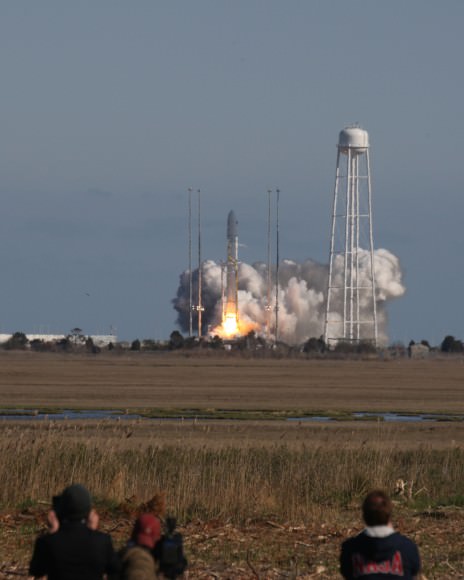
The test flight was dubbed the A-One Test Launch Mission and also signified the first launch from Americas newest space port at Pad-0A.
The primary goal of this test flight – dubbed the A-One mission – was to test the fully integrated Antares rocket and boost a simulated version of the Cygnus cargo carrier – known as a mass simulator – into a target orbit of 250 x 300 kilometers and inclined 51.6 degrees.
Antares also lofted the trio of off-the-shelf-smartphone “PhoneSats” to orbit. The three picture taking satellites are named Alexander, Graham and Bell and could be the lowest-cost satellites ever flown in space.
“The Phonesats cost about $3500 each,” said Andrew Petro, NASA Small Satellite Program executive, to Universe Today. “They are deployed after separation.”
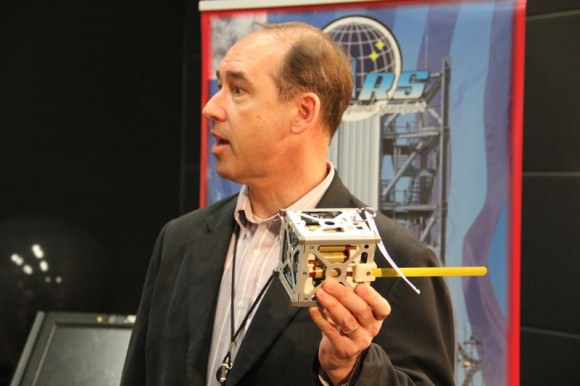
The goal of NASA’s PhoneSat mission is to determine whether a consumer-grade smartphone can be used as the main flight avionics of a capable satellite but at a fraction of the cost.
NASA reports that all three lithium battery powered nanosats are functioning and transmitting data to multiple ground stations.
Two of the cubesats are PhoneSat version 1.0 while the other is the more advanced PhoneSat version 2.0. They were developed by engineers at NASA’s Ames Research Center in Calif.
Each square shaped smartphone measures about 4 inches (10 cm) per side, weighs about 4 pounds and is the size of a coffee mug. The smartphone serves as the cubesats onboard computer – see my photos.
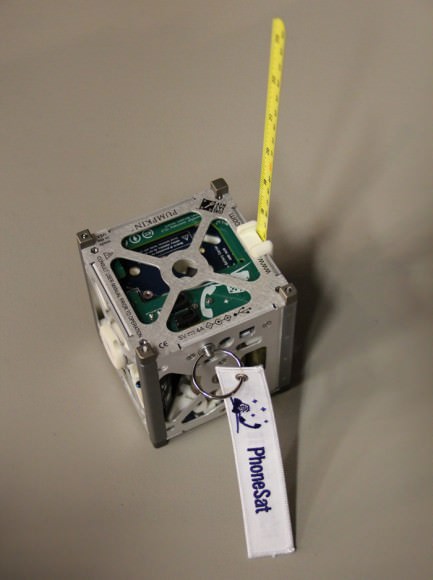
The cameras will be used for Earth photography. Imaging data will be transmitted in chunks and then stitched together later.
The third time was the charm for Antares following a pair of launch scrubs due to a technical glitch in the final minutes of the initial countdown attempt on Wednesday, April 17 and unacceptable winds on Saturday, April 20.
The rocket flew on a southeasterly trajectory and was visible for about 4 minutes.
This test flight was inserted into the manifest to reduce risk and build confidence for the follow on missions which will fly the fully outfitted Cygnus resupply spacecraft that will dock at the ISS, starting as early as this summer.
The two stage Antares is a medium class rocket similar to the Delta II and SpaceX Falcon 9.
The dummy Cygnus payload was outfitted with instrumentation to collect aerodynamic data until separation from the 2nd stage. That marked the successful conclusion of the A-One mission and the end of all data transmissions.
It will fly in earth orbit for about two weeks or so until atmospheric friction causes the orbit to decay and a fiery reentry.
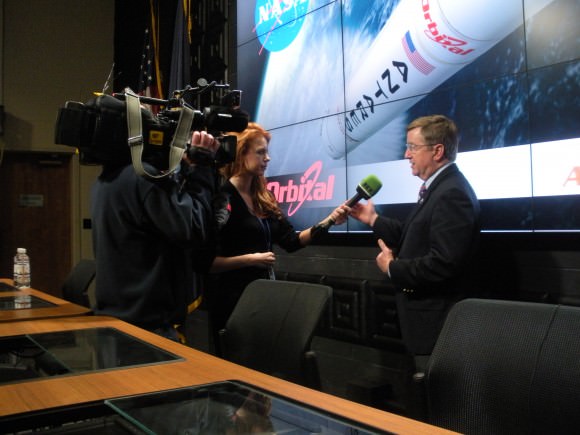
The Antares first stage is powered by dual liquid fueled AJ26 first stage rocket engines that generate a combined total thrust of some 750,000 lbs – original built in the Soviet Union as NK-33 model engines.
The upper stage features an ATK Castor 30 solid rocket motor with thrust vectoring. Antares can loft payloads weighing over 5000 kg to LEO. The 2nd stage will be upgraded starting with the 4th flight.
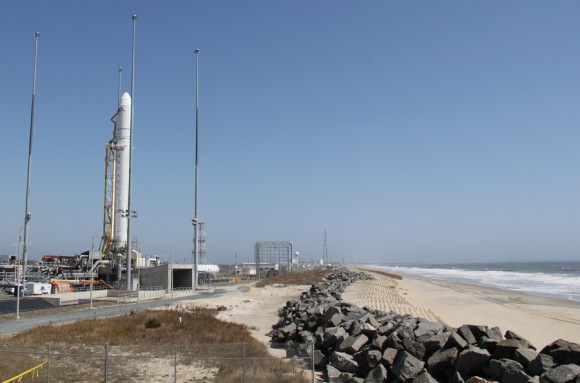
The Antares/Cygnus system was developed by Orbital Sciences Corp under NASA’s Commercial Orbital Transportation Services (COTS) program to replace the ISS cargo resupply capability previously tasked to NASA’s now retired Space Shuttle fleet.
Orbital’s Antares/Cygnus system is similar in scope to the SpaceX Falcon 9/Dragon system. Both firms won lucrative NASA contracts to deliver approximately 20,000 kilograms each of supplies and science equipment to the ISS.
The goal of NASA’s COTS initiative is to achieve safe, reliable and cost-effective transportation to and from the ISS and low-Earth orbit (LEO).
Orbital will launch at least eight Antares/Cygnus resupply missions to the ISS at a cost of $1.9 Billion
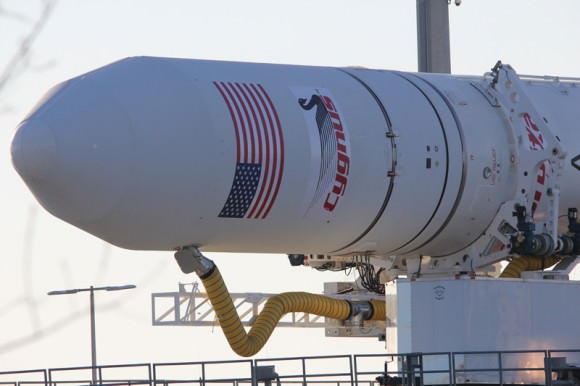
Ken Kremer
…………….
Learn more about Antares, Orion, SpaceX, Curiosity and NASA robotic and human spaceflight missions at Ken’s upcoming lecture presentations:
April 28: “Curiosity and the Search for Life on Mars – (in 3-D)”. Plus the Space Shuttle, SpaceX, Antares, Orion and more. Washington Crossing State Park, Titusville, NJ, 130 PM
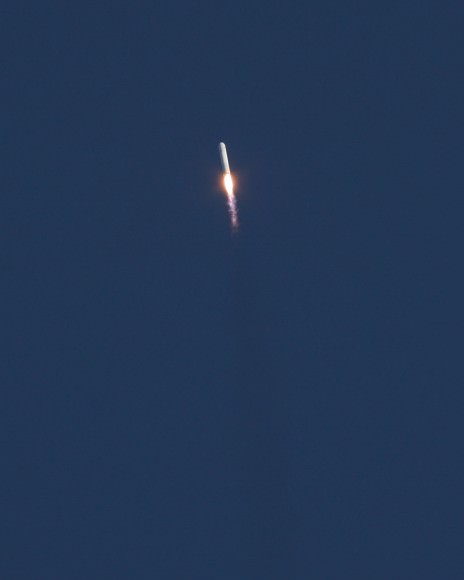
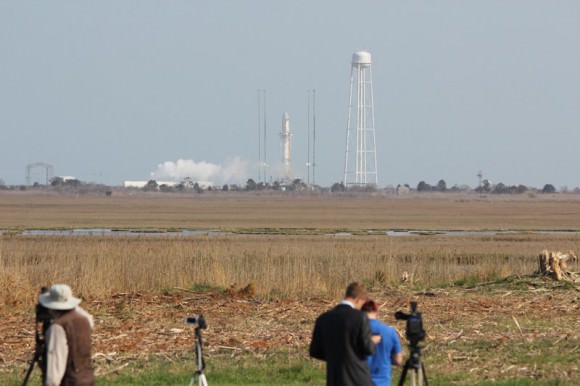

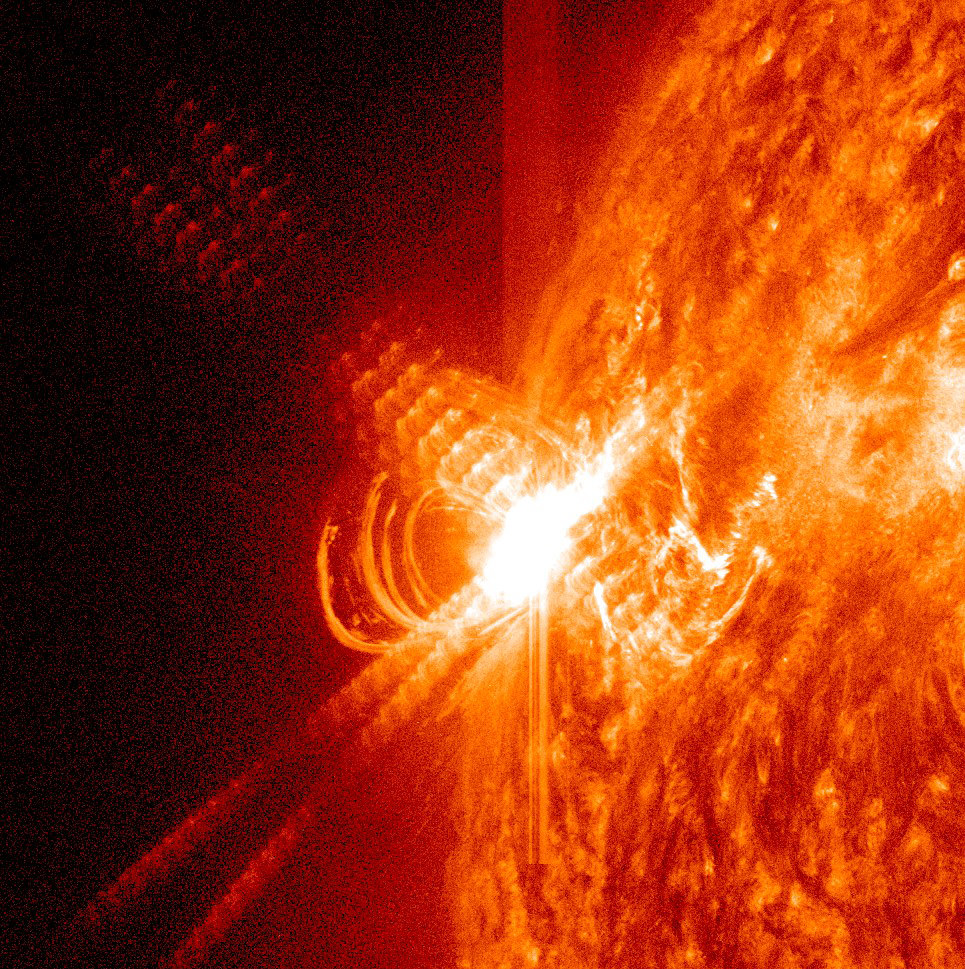
![470505_10150721848592868_1231281550_o[1]](https://www.universetoday.com/wp-content/uploads/2013/05/470505_10150721848592868_1231281550_o1-580x214.jpg)
